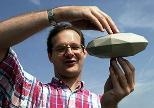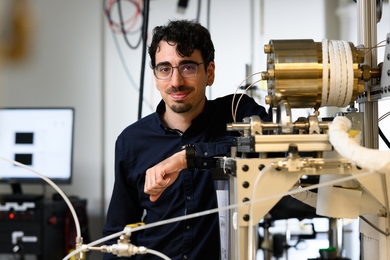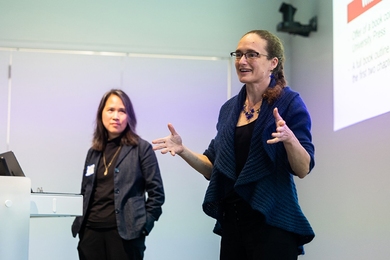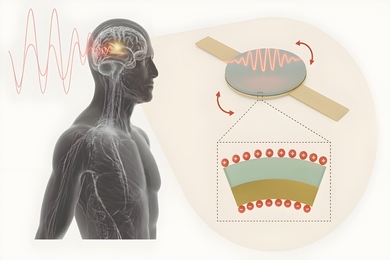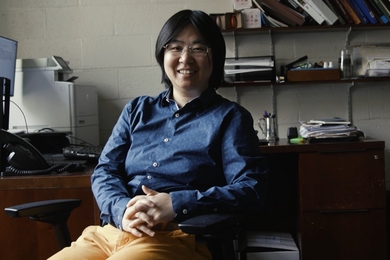This story is reprinted with permission from SPACE.com, written by senior science writer Robert Roy Britt and posted Sept. 4 at http://www.space.com/scienceastronomy/asteroid_siblings_020904.html.
Within a family of more than 200 asteroids cleaved from a larger space rock in some long-ago catastrophe, siblings are mysteriously grouped into two categories defined by sharply different rotation orientations, a new study shows.
The finding reveals a puzzling void of knowledge about how asteroids form and evolve.
Researchers had expected that each rock in the so-called Koronis family of asteroids would spin at some randomly determined rate. This action would be a result of the chaos of their birth, and the axis of each asteroid's rotation would point in some random direction. The family was originally created in a collision between two large asteroids, experts generally agree.
MIT researcher Stephen Slivan examined changes in brightness of 10 Koronis asteroids, caused by the objects' non-spherical shape and changes in sunlight reflection as they rotate. The technique is akin to spinning a potato under a spotlight: its sides reflect more light than its ends. Measuring the time between peaks and dips in brightness provides a rotation rate and other information.
Slivan found seven of the 10 asteroids clumped into two groups based on their rotation rates. Three larger asteroids revolved about their axes in about 14 hours, while four smaller rocks took about 8.5 hours, on average, to complete a rotation.
More significant and perplexing was that all 10 asteroids were fairly neatly divided into two groups based on the orientation of their spin axes. Most objects in the solar system rotate about an axis that is not perfectly aligned with that of the Sun. Earth, for example, is tilted about 23.5 degrees.
In the sample of Koronis asteroids, Slivan found six whose axes generally point one way while four point in a distinctly different direction.
"I was looking for a subtle effect," he said of these so-called spin clusters. "This hits you in the face."
The results, which will be detailed in the Sept. 5 issue of the journal Nature, generate questions rather than supplying answers.
"The fact that the spin clusters exist at all tells us that even what we thought we understood about family formation and/or what happens afterwards is at best very incomplete, because we have no consistent explanation at present for the observed clustered spin distribution," Slivan told SPACE.com.
Of the likely collision that created the family, Slivan said the amount of energy released was "much, much greater than anything in human experience, so much so that we don't really understand how the process unfolds."
Like most asteroids, the Koronis family orbits the Sun between Mars and Jupiter. Astronomers are eager to learn more about the characteristics of such asteroids so they can consider how best to divert or destroy one that might someday be found on a collision course with Earth. Further, grasping the evolutionary history of asteroids would improve understanding of the solar system's development.
The Koronis family has a history of presenting puzzles, including one regarding the timing of its creation.
One of its largest family members, Ida, is peppered with craters, a scene some researchers think indicates the initial birth must have taken place three billion years ago or more. But Ida has a moon, Dactyl, that other scientists say must have been created in that initial collision. Yet Dactyl, they say, can't be more than 100,000 years old.
Slivan speculates that the spin clusters might be the result of subsequent collisions, which could have generated asteroidal grandchildren with similar spin rates. Or, he suggests, some effect over time might gradually nudge asteroids with random spin characteristics toward those observed in the study.
Only a broader study of asteroids outside the Koronis family will fully answer these questions.
"For now it's a big puzzle," he said, adding that any solution is "quite a ways off in the future."
© 2002 SPACE.com, Inc. All rights reserved.
A version of this article appeared in MIT Tech Talk on September 25, 2002.
